SUMMARY
This is AI generated summarization, which may have errors. For context, always refer to the full article.
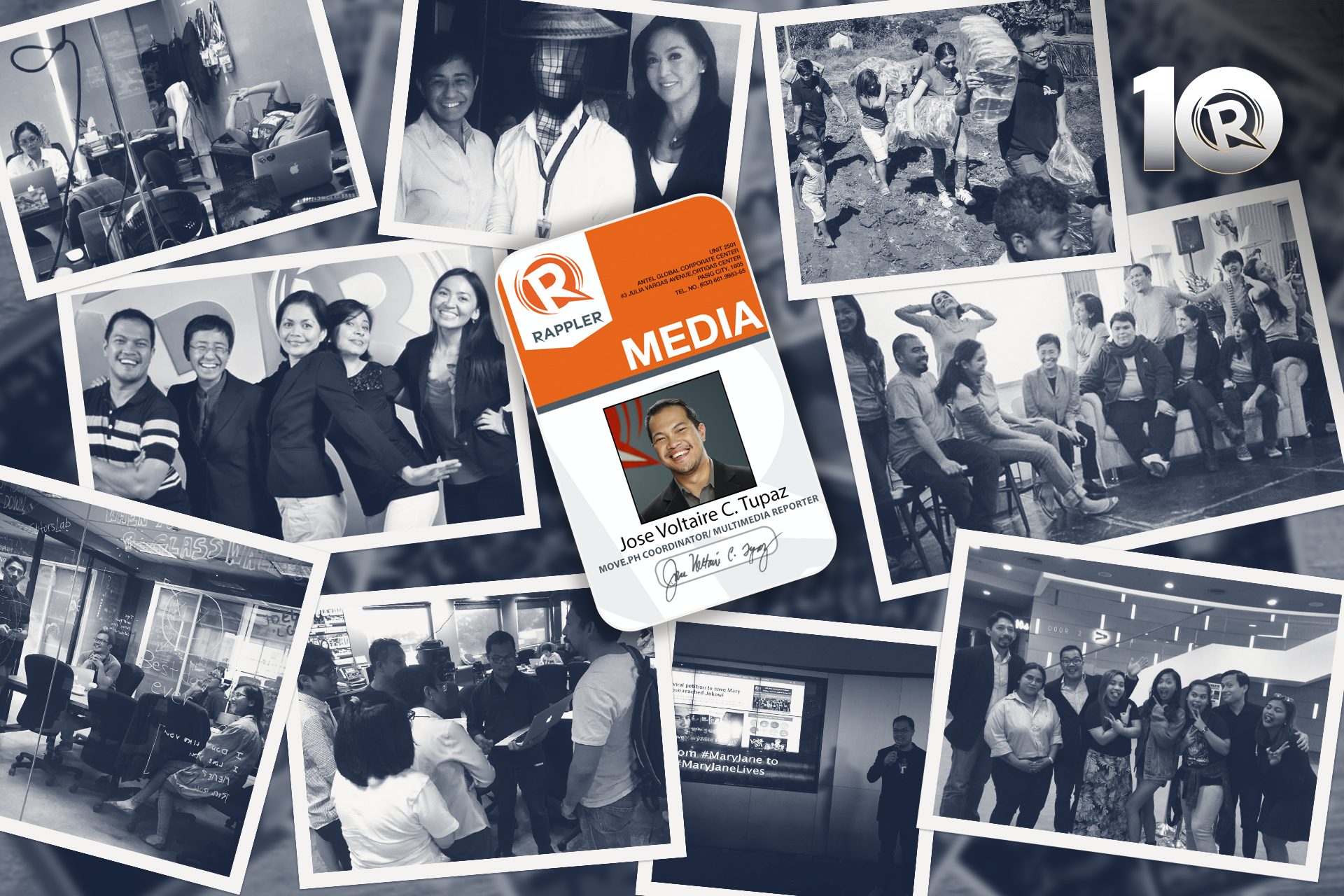
We are publishing a series of essays from Rappler employees, old and new, as part of our commemoration of Rappler’s 10th year anniversary in January 2022.
LEYTE, Philippines – I was a “troll” before I became a journalist, and a future Nobel Peace Prize laureate was my first “victim.”
It was a decade ago when the internet was more fun in the Philippines. Trolling was less toxic, and reporters were still in that stage of discovering Twitter. I was a young advocate then, exploring social media for my social cause. Why not engage the media on Twitter, I thought. After all, “the revolution will be tweeted,” we were told after the spread of digitally-fueled protests called the Arab Spring.
So I created an anonymous account, interviewed journalists via my Twitter talk show #in140char, and invited them to press conferences called #TweetConPH. One day, one of my Twitter friends, @maria_ressa, asked: “Am curious. Why do you use a pseudonym?” I almost fell off my chair when I read her tweet.
Maria was then the head of ABS-CBN’s News and Current Affairs after a long stint as CNN Jakarta bureau chief. She was raising a concern about anonymity – something that would later be used as a weapon against Rappler and the entire journalism profession. I told her, in a tone loaded with bitterness: “You will not banter with ordinary netizens like me over coffee, but with such anonymity, it at least becomes a virtual possibility.” She suggested a tweet-up.

I gave it a shot, and a few weeks later, I found myself in the busy Kapamilya newsroom. The moment was a dream come true for me, a development worker from the province whom Maria met on social media. At the time, I was just one of those anonymous accounts on Twitter that engaged her and other journalists during the 2010 elections.
She invited me to work at ABS-CBN. I said I’d think about it. I was busy fighting for indigenous peoples’ rights in the Cordillera. In my mind, “Girl, are you serious? My Waray accent is thicker than your eyeglasses.”

She gave me a tour that culminated in the TV Patrol studio. With the anchors, we listened to then-president Gloria Macapagal-Arroyo’s live farewell speech. It was an era that didn’t see another media shutdown coming.

Saying ‘yes’ because of John Lloyd Cruz
Maria and I kept in touch on Facebook, where she again offered me a job. This time for a new online news platform she was creating. We again met over coffee. She said the group she’s forming included fierce journalists like Cheche Lazaro, Marites Vitug, Glenda Gloria, Chay Hofileña, Beth Frondoso, and Patricia Evangelista. The media landscape is changing, people are getting more engaged, and technology is making that possible, she told me in so many words I couldn’t understand.
I was about to tell her again that I would seriously think about it when John Lloyd Cruz suddenly appeared and asked if he could join us. He told me he’s a fan of Maria. They chatted. I was speechless the whole time, occasionally sipping coffee from my empty cup. Had I known he would pay our bill, I would have ordered more.
“Voltaire, was that ethical? Shouldn’t I thank him? I don’t have his number,” Maria whispered. I didn’t know how to answer her. “What do I even know about journalism ethics?” I told myself. I couldn’t even remember my dining etiquette, let alone use the chopsticks beside my plate. “I think so, I’ll get his number,” I just told her. My way of saying, “Yes, Ma’am Maria. I’m in.”
The next thing I knew, I was signing a contract as Rappler’s employee number one.
There were 12 of us in the founding team, mostly young, idealistic, and passionate individuals from diverse backgrounds. The civic engagement arm, where I belonged, was called MovePH because we built communities to take action on issues that mattered to them. The name came from Patricia Evangelista (employee number 6), who – while scoffing at the idea of changing the world – suggested the name anyway. The meeting to decide the name had run long, and she wanted to smoke. And the rest, as they say, is history.

Mentors and friends
It was a difficult career shift for me. At first, I felt intimidated by the achievements and experiences of my colleagues. I wasn’t a trained journalist. I took up journalism in UP Baguio but shifted courses because I thought someone who was uncomfortable with English didn’t belong in media.
But spending the last years of my youth with Rappler was both fun and life-changing. I’m not sure though if my former bosses felt the same way after putting up with my chaos and mistakes.
Drafts of my news stories read like manifestos. My editor, Chay Hofileña, known for being strict and rigorous at Ateneo, would end up feeling horrified by my copy. Thanks to her mentorship, she managed to turn me into the content editor of MovePH, my last stint at Rappler. But I guess she’d rather edit my stories than offer me a ride again. When we were starting, the company didn’t have cars, so she once drove me to an event in Clark which I thought was happening on a Wednesday. When we arrived, we were told it had already taken place the day before. She remained composed on the steering wheel on our way back to Manila. I was silent and mortified. She must have been furious, but she still managed to lift my spirits. “Just please remember that I will always have your interests and your growth in mind. If you need to unburden or need help to sort things out, let me know. If you have questions or feel lost, let me know, too,” she wrote in a reprimand that read like a love letter.
Indeed, I felt lost and needed to sort things out as a newbie journalist. In my first State of the Nation Address coverage in July 2011, as we prepared for Rappler’s launch, I proudly advised our video production head, Beth Frondoso, about my exclusive video interview with then-Sarangani representative Manny Pacquiao. But she couldn’t believe what she saw. “Voltaaaire! Bakit puro sound bite at paa? Anong akala mo sa FlipCam, audio recorder? (Voltaire, why am I only hearing sound bites and seeing footage of his shoes? Did you mistake the FlipCam for an audio recorder?) I guess I did. In my excitement, I aimed the small gadget at his mouth, like how I would see radio reporters conduct their interviews. I enjoyed tough love from Beth as she patiently helped me shoot and edit video reports with stand-uppers that I would finish after 30 takes.
I was also an admin and human resource nightmare. I got a few memos from our then-managing editor Glenda Gloria for cutting corners. Once, I casually mentioned to her that I planned to take a break. I didn’t file a leave of absence because I was not used to office protocols on vacations when I was an activist. I didn’t have vacations to begin with back then. Glenda and the editors woke up to an avalanche of photos on my Facebook account – camels, candid pose by a palm tree, Dubai desert safari. They checked our content management system (CMS). I had not filed a single story. But Glenda understood me and my vulnerabilities – sunsets, love life, family. I cried buckets of tears with her. She drank buckets of beer. She taught me the value of feelings and empathy in life or in storytelling.

Walking disaster
Perhaps, Maria had the most unfortunate, if not unforgettable, moments with me. For the first time in her globe-trotting life, on our way to Bali for a forum, we missed our flight – and her luggage – because I had to rush a project proposal during the layover and I got confused by the military time on our boarding passes. She didn’t freak out. I did. She didn’t scold me. I slapped myself in shame.
Maria had plan B, as every journalist should have in crisis situations, she said. First, we needed to drop by a convenience store to buy chocolates and candies. Then she rebooked our flights. Organized and meticulous, Maria is so particular with plans and workflows.
One morning in 2013, she asked, “Voltaire, how’s the disaster response platform?” I replied brimming with enthusiasm and tapping my temple: “Good morning, Ma’am Maria! Don’t worry, it’s in my head.” She looked at me, tried to smile, stepped back, and then attempted to speak. “It’s still in your head?” my boss shrieked.

A colleague who had been sitting beside me grabbed her laptop and walked away, terrified, she told me later, that she would be sacked on the spot with me.
Project Agos: Our ‘revolution’
What Maria was looking for was the master plan for Project Agos, a digital one-stop-shop for climate change and disaster risk reduction that we both had in mind. She had taken the idea seriously, found a funder, and the funder was scheduled to hear out our pitch the next day. Maria wasn’t just asking for a PowerPoint, but the entire plan that I had promised so confidently months before. I am comfortable with ideas. Translating those ideas into a plan, with the Excel sheets and user experience and key performance indicators, was not my strong suit then.
The plan, as it happened, was all in my mind, and nowhere else.
Again, I wasn’t fired that day, thank God. Instead, Maria threw resources behind me – researchers, a tech team, and 24 hours to transform what had been a concept into a pitch. We pulled off a proposal, and Maria walked off to present it.
She returned from the meeting gushing, her voice, high-pitched as always, cheery as she greeted me. The funders thought it was a brilliant idea.
We built the pioneering Agos community in a month. We worked in concert with the UN and government agencies. MovepH, Rappler’s civic engagement arm, worked on at least 50 agreements with various local government units, civil society organizations, and other groups. My team thought it was impossible. Sometimes I did too. Maria believed otherwise. She prevailed, as always. For her, Project Agos was not only an online platform, it was the convergence of journalism, technology, and community.
By then I had learned how to pitch it. For days, I holed up in a room with tech guys discussing algorithms and artificial intelligence. “Think of Project Agos as a reservoir of government and private sector efforts,” I would say, “enhanced by social media, by big data. In other words, by you, the people.” They were big words. I thought it sounded like Maria. But they were actually inspired by her vision and the team’s mission to create ripples of digitally-fueled conversations and change across the country. Rappler, after all, came from the root words “rap” (to discuss) and “ripple” (to make waves).

Social media for social good
Before I left Rappler in 2018, Maria sent me to Japan to speak at the 2017 World Bosai Forum/International Disaster and Risk Conference on her behalf. Except for the per diem that I was entitled to request, I didn’t forget anything. Neither did I miss the bullet train. I came prepared as Maria would have been. I brought with me the body of social work that we brought to life to save lives. A story of hope and courage from the Philippines.
At the time, Rappler was already being attacked online, the very space where it wished to create ripples of change. Long before it exposed the weaponization of social media, Rappler had advanced the amplification of social good, I told the audience in Sendai. I will never forget how Rappler helped my fellow Leyteños in the aftermath of Super Typhoon Yolanda (Haiyan). Through those tragic times, MovePH’s Agos team gathered reports on devastation, missing people, and relief needs. It also took the initiative in mapping cell signals in affected areas. I witnessed how it facilitated reconnecting survivors with their relatives outside the disaster zone, a lesson that inspired us to carry on and turn the platform into a life-saving tool.

One of those lives saved was Baby Yesha’s. Yesha was born on a harsh day, hours after another storm hit the country in 2014. The Rappler team was in Tacloban for the 2nd Social Good Summit, an annual gathering that showcases innovations that solve real-world problems. During the event, our Agos network had to respond to her mother’s desperate cry for help from Quezon City. Yesha was still in the womb when floodwaters rushed into her family’s cramped shanty. Her young brothers – all 5 of them – and her paralyzed aunt shuddered in fear as the wind howled. Her mother, Riza, evacuated them to the roof, one by one, while in labor. The family was saved because of selfless volunteers, strangers, and brave responders, who collaborated through social media.
Such is the power of technology when used to amplify solidarity and compassion instead of hatred and disinformation.
#SaveMaryJane
In 2015, using the same technology and the power of community, we also helped spare the life of a Filipina from execution in Indonesia. MovePH partnered with religious groups, migrant rights advocates, and the petition website Change.org to roll out a global online signature campaign that would eventually reach the Indonesian President. He listened.

From #SaveMaryJane, we turned the hashtag into #MaryJaneLives. It seemed like a miracle as the new trending hashtag spread like wildfire. But it was prayers, protests, diplomacy, petitions, and APIs combined that saved Mary Jane Veloso.
At Rappler, I lived for these moments and not for the mistakes I committed. Mistakes can be corrected but lost lives can never be resurrected.

For me, the newsroom was a place of change and inspiration. It turned my youthful mess into disciplined passion; replaced my pessimism with the courage to fight because for journalists, every day is a struggle to be truthful and fair, humane and uncompromised.
Most importantly, it allowed me to find my voice because my mentors and colleagues listened to me even if I did not sound like the way it was in my head. They felt and trusted what was genuinely in my heart even if I failed, even if we disagreed, as long as I got up and delivered with a bang.
Lying on a bamboo chair on my farm next to a stream as I sifted through my memories for this piece, I wondered why on earth Maria took a chance on me, a promdi from this remote town called Dagami, when my only resume was my tweets. The answer was on the T-shirt she raised on the podium after receiving the Nobel Peace Prize in Oslo. She did “believe there is good in the world” wherever you come from.
From my farm, I’m humbled to add my small voice to Rappler’s call to #HoldTheLine as it celebrates its 10th anniversary. – Rappler.com
Voltaire is now the chief content officer of FYT, an independent media outfit that he co-founded in 2018. During the COVID-19 pandemic, he returned to his roots to be with his family. When he is not working online, he dabbles in farming, growing organic vegetables on his land surrounded by pristine streams.
Add a comment
How does this make you feel?

![[Be The Good] Introducing ‘The Listening Project’](https://www.rappler.com/tachyon/2024/05/carousel-4.png?resize=257%2C257&crop=424px%2C0px%2C1080px%2C1080px)

![[WATCH] #TheLeaderIWant: Filipino voters sound off on community issues a year before 2025 elections](https://www.rappler.com/tachyon/2024/05/filipino-voters-sound-off-on-community-issues-1.jpg?resize=257%2C257&crop=276px%2C0px%2C720px%2C720px)
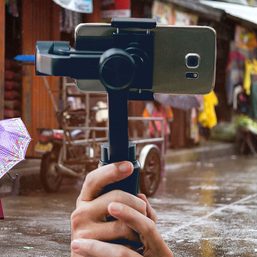
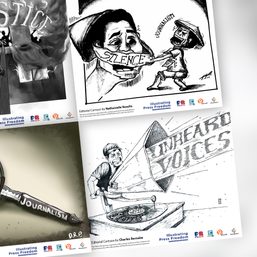
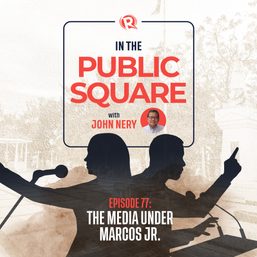
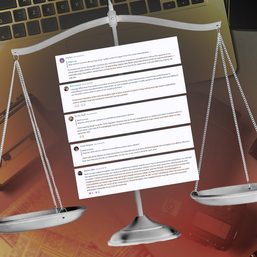
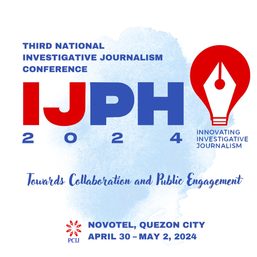
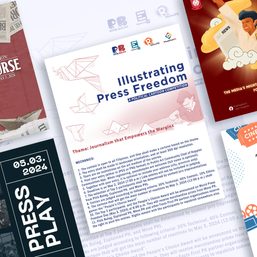




![[OPINION] You don’t always need a journalism degree to be a journalist](https://www.rappler.com/tachyon/2024/06/jed-harme-fellowship-essay-june-19-2024.jpg?resize=257%2C257&crop=287px%2C0px%2C720px%2C720px)










There are no comments yet. Add your comment to start the conversation.